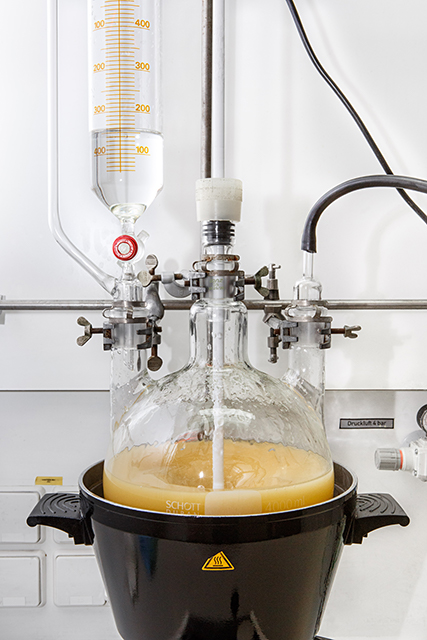New flame retardants based on cellulose and the sugar alcohol erythritol


The FNR project “BioFlammschutz” has developed innovative, bio-based, and environmentally friendly phosphorus-containing flame retardants. These are intended to serve as an ecologically and economically advantageous alternative to the halogen-containing flame retardant additives currently in use, which are problematic from an ecotoxicological perspective. The new flame retardants were produced from cotton and wood cellulose and the inexpensive sugar alcohol erythritol using a method developed at Fraunhofer LBF. Their suitability was demonstrated in the flame retardancy of polyolefins and a partially bio-based polyamide.
Bio-based flame retardants are the subject of intensive research aimed at overcoming remaining disadvantages such as low thermal stability, higher prices, and limited compatibility with plastic materials.
The FNR project “BioFlammschutz” (Bio-based Flame Retardants) advanced the development of novel, environmentally friendly, bio-based phosphorus-containing flame retardants that have higher thermal stability and are easier to process. They were produced using a method developed at Fraunhofer LBF that is sustainable and cost-efficient. The suitability of the new flame retardant additives was demonstrated by their use in polypropylene and a partially bio-based polyamide.
The project work was carried out in collaboration with the Hamm-Lippstadt University of Applied Sciences and the companies Clariant, BASF SE, and ARGUS Additive Plastics GmbH.
The process developed at Fraunhofer LBF was used and further improved for the synthesis of flame retardants. It consists of two steps:



The advantages are that bio-based and cost-effective raw materials are used, toxicologically problematic solvents and reagents are avoided, and no substances requiring disposal are produced. There is potential for broad structural variation and optimization.
As a result, two flame retardants were selected, one of which was structurally optimized for use in partially bio-based polyamide and the other for polyolefins.
The former was synthesized from organic cotton and has unusually good thermal stability (approx. 280°C) for bio-based flame retardants. It was easy to incorporate into the partially bio-based polyamide and showed good flame retardancy (UL94 V2 classification). The flame retardant optimized for polyolefins was synthesized from wood pulp, which is very advantageous from an economic and ecological point of view. The esterification of the reaction-inert wood pulp was achieved with new, highly active catalysts and a special pulp activation process.
This flame retardant showed good compatibility with polypropylene and good flame retardancy in test specimens and films made of the plastic, especially in combination with synergists.
The FNR project resulted in new, bio-based flame retardants that are thermally stable, easy to process, and flame retardant. They have great potential for application.


The development of bio-based flame retardants was funded by the German Federal Ministry of Education and Research (BMBF) (031B0719) and the Agency for Renewable Resources (Fachagentur Nachwachsende Rohstoffe e.V.) (220NR032).
Literature
Kaplan M, Ciesielski M, Fuchs S, Getterle Ch, Schönberger F, Pfaendner R. Novel macromolecular and biobased flame retardants based on cellulose and phosphorylated sugar alcohols. Polymers 2023; 15: 3195-3227.